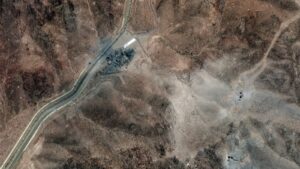
Our understanding of future climate change heavily relies on sophisticated computer simulation models. These models are expansive, comprising over a million lines of code that integrate knowledge from numerous scientific disciplines. No single scientist fully comprehends all aspects of a model’s inner workings. Despite this complexity, climate scientists don’t just focus on a single model; they develop and compare multiple models through various climate model intercomparison projects. This approach amplifies both opportunities and complexities.
As a philosopher of science, I am intrigued by how model comparisons enable scientists to extract meaningful insights from this web of complexity and uncertainty. Inspired by a recent post by climate modeler Ricky Rood, I reflect on how models designed for specific purposes often yield unexpected insights.
The Paradox of Imperfect Models
Climate scientists often echo statistician George Box’s sentiment that “all models are wrong, but some are useful.” But what does “wrong” imply in this context? On one hand, it refers to the idealizations and abstractions inherent in all scientific models, including climate models. Idealizations involve approximating reality. For instance, climate models parameterize cloud microphysics, representing large-scale effects without explicitly modeling every process.
Abstractions, on the other hand, involve omitting certain processes or features altogether. Many current climate models, for example, exclude brown carbon aerosols while representing other aerosol types. Thus, when we say “all models are wrong,” it may simply mean that all models incorporate some level of idealization or abstraction. Despite these simplifications, such models can still be advantageous, as they are often easier to understand than those attempting to capture every detail.
Accuracy and Utility
Climate models can also be “wrong” in the sense that they may provide inaccurate outputs regarding past, present, or future climates. This is particularly evident when comparing model outputs with observations of past and present climate variables such as temperature and precipitation. Performance analyses often reveal a mixed bag: some models excel with certain variables, while others perform better elsewhere.
“If we rank models based on their simulation of global mean surface temperature in the 2010s versus their simulation of Arctic sea ice melt over the past 30 years, different models may come out on top.”
This highlights another aspect of the phrase “all models are wrong”: all models produce some inaccurate outputs. Yet, these inaccuracies can still be useful.
Models Fit for Purpose
Ricky Rood emphasizes that models must be “designed, built, and evaluated to address a specific application.” A simple model may suffice for teaching Earth’s energy balance fundamentals, while a suite of advanced general circulation models is better suited for projecting global climate under specific scenarios.
However, determining a model’s purpose is challenging. While updating a model to better capture cloud feedbacks might seem beneficial, it can sometimes lead to less accurate simulations of temperature changes. This was the case for one modeling group, which only understood the inaccuracies after months of iterative testing and analysis.
Moreover, models deemed unfit for one purpose may be repurposed for another. Inaccurate or “wrong” models often play a crucial role in generating new knowledge.
Repurposing Models for New Insights
In a 2020 study, Katarzyna Tokarska and colleagues used model-based estimates to explore transient climate response (TCR), a measure of climate sensitivity. Some models, dubbed “too-hot,” poorly simulated recent warming. Yet, instead of discarding these models, the researchers used them to identify a pattern: models showing more warming for recent decades estimated higher TCR values.
“The too-hot models weren’t directly used in the final estimate, but they played a crucial role: They helped establish the pattern and showed that, collectively, climate models were performing well.”
This approach reflects a broader trend in climate modeling. In 2005, Ben Santer and colleagues found that models individually poor at simulating certain variables collectively represented their relationship well, providing evidence to discard controversial satellite data. More recently, less accurate models have been used to test better models in weighting frameworks.
The Antifragility of Climate Models
Climate modeling exemplifies Nassim Taleb’s concept of “antifragility,” where systems benefit from errors or disturbances. While a gust of wind can extinguish a candle, it fuels a wildfire. Similarly, discovering a model’s poor performance is a failure that the modeling community learns from.
These failures, whether in simulating Arctic sea ice trends or transient climate response, do not mark the end of usefulness. Instead, scientists repurpose models to generate new knowledge despite imperfections. This pragmatic approach reveals something deeper about how knowledge grows in climate modeling. Models capture robust relationships even when they err, allowing scientists to progress through comparison, iteration, and critical interpretation.
Ryan O’Loughlin is an assistant professor who researches and teaches philosophy and climate change at Queens College and the CUNY Graduate Center.







